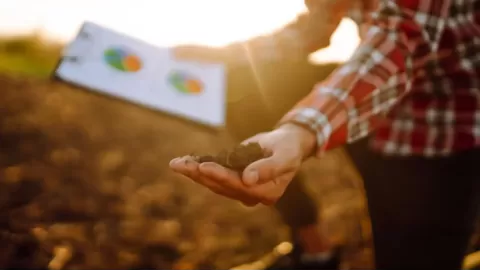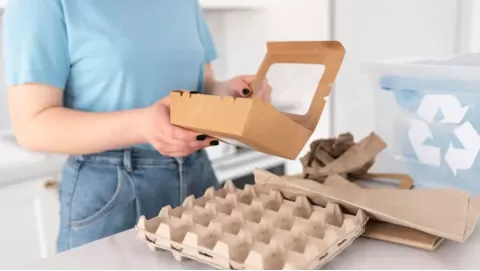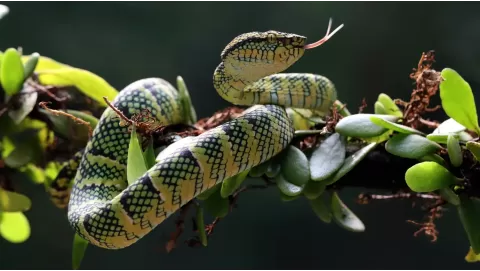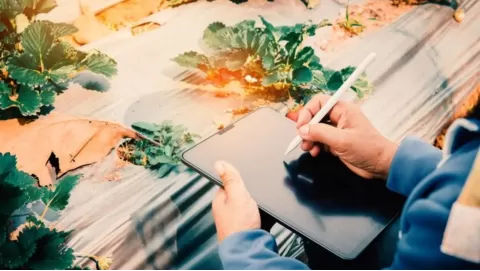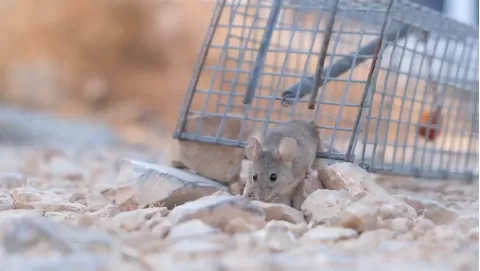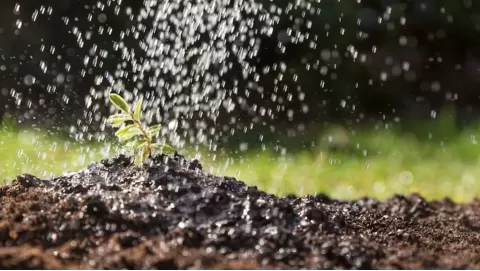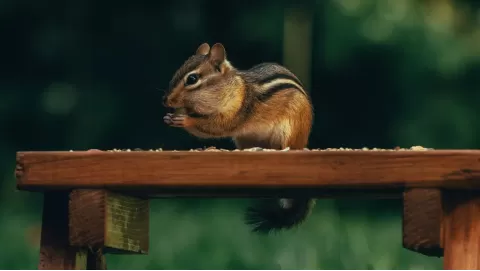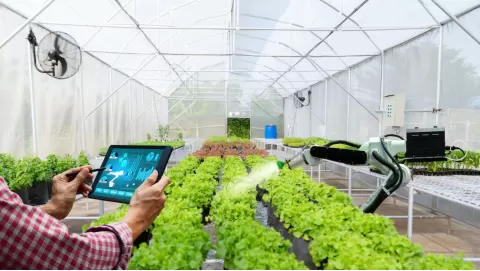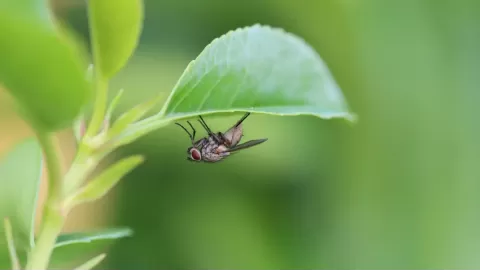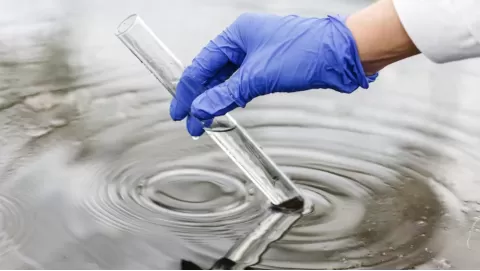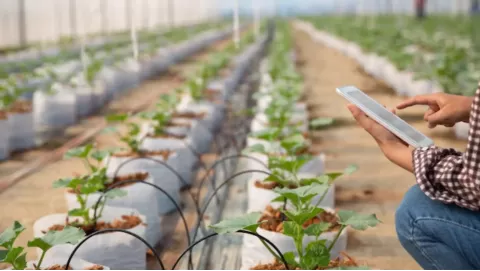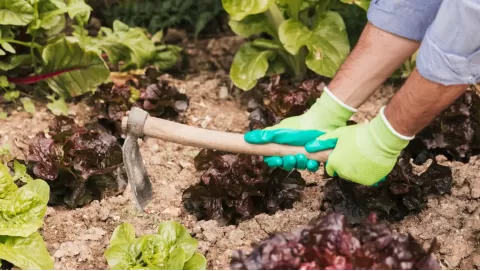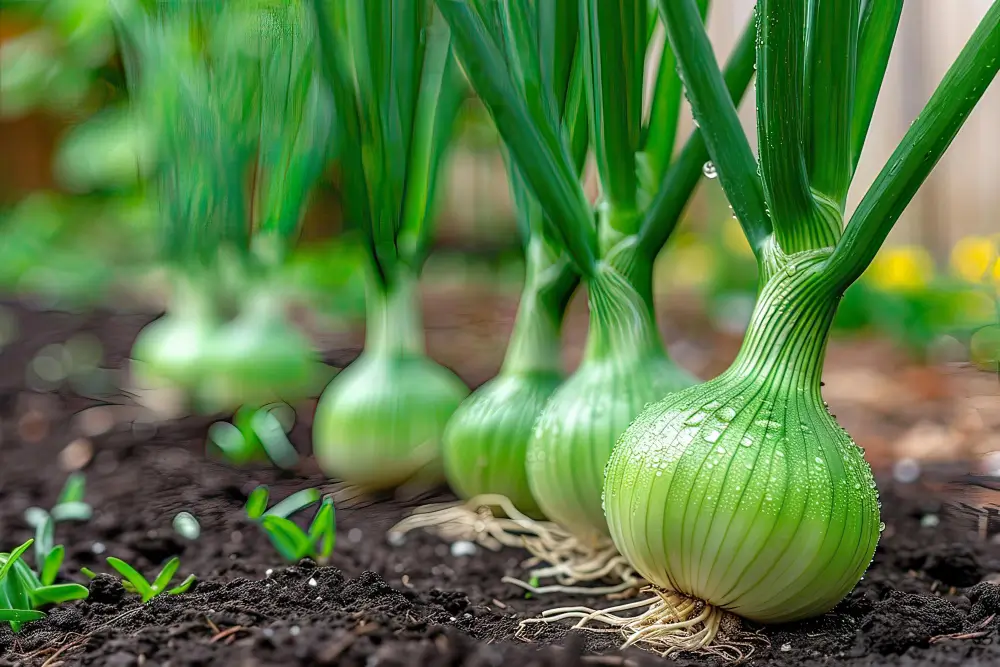
How to grow green onions: Quick tips for a continuous harvest
Green onion is a common household vegetable used for its mild-flavored bulbs and green shoots. It is also widely called scallions or spring onions. Botanically, it is Allium fistulosum, and it is classed as a bunching onion.
Green onion is part of the family Amaryllidaceae, which includes many edible members, such as garlic, leeks, chives, shallots, etc., but onions are actually planted as green onions without fully developing the bulb.
According to many archeologists and botanists, green onions originated in Central Asia, and traces of their ancient cultivation and production are found in Iran and Pakistan. This vegetable formed a significant part of a prehistoric diet and was grown in gardens in China as early as 5000 BCE. Egyptians cultivated green onions as early as 3500 BCE. Green onions were also widely consumed in the diets of ancient Romans and Greeks. They also brought their cultivation techniques across Europe and the Mediterranean.
Green onions are grown for the edible green leaf and white stalk. They are coveted for their mild onion flavor and bright green leaves. Due to this simple cultivation process, green onions have become one of the most cultivated vegetables. Green onions are used in countless cuisines and dishes all around the world, due to their flavor, aroma, and versatility. They have a wide range of culinary applications in soups, salads, sauces, dips, and other dishes. When it comes to flavoring (or garnishing), green onions are a great solution.
Growcycle offers information on the best tools for cultivating green onions in various environments. They provide comprehensive solutions, ranging from modern agricultural tools to fertilizers, pest control measures, and specialized solutions for gardeners.
With their expert guidance and high-quality products, Growcycle fulfills all the needs of beginner and commercial growers. A good harvest of green onions is within reach of everyone, bringing nutrients and flavor to their kitchens. onions.
Botanical Description
Underdeveloped bulbs represent green onions (Allium fistulosum). The stem has swelling parts called pseudo bulbs that store water and nourishment. From the top of the bulb, there are long, hollow, linear green leaves. These leaves may reach 20-25 inches and play a major role in photosynthesis.
Green onions have a basic, fibrous root system that grows shallow and horizontally under the soil’s surface, allowing the plant access to water and nutrients. The stem is the center part of the plant that forms a pseudo-bulb to provide leaves and roots. Green onions are perennial herbaceous plants often grown as annuals because they are grown for their edible bulbs and leaves.
If not harvested, the green onion plant forms a tall flowering stalk that can reach 36 inches in height. Small star shaped white or light purple flowers in umbel arrangements bloom at the end of this stalk. These flowers eventually turn into small dark brown or black seeds, which can be collected and saved for planting next season.
Nutritional Benefits
Green onions carry essential vitamins and provide significant health benefits when used regularly. Here is how you can grow green onions at home, which are a delicious, nutrient-dense food source. A serving of 100 grams of green onions provides roughly 40 kcal, 1.1 g protein, 0.1 g fat, 1.7 g fiber, and 9.3 g carbohydrates.
Green onions are an excellent source of vitamin C, providing approximately 12% of the RDI per 100 grams. Vitamin C supports immune health, maintains healthy skin, and acts as a strong antioxidant. They also contain small quantities of vitamin B6, which helps with brain and blood cell formation. Green onions are also a source of folate that helps in the growth of cells and the correct synthesis of DNA.
Potassium (K) is often abundant in green onions, as well, providing nearly 4% of the RDI. Potassium plays a very important role in regulating normal cardiac function and in managing blood pressure. They supply the body with trace amounts of calcium (Ca), which is required for bone health, and magnesium (Mg), which plays a role in the function of nerves and muscles.
Green onions are rich in antioxidants such as quercetin and sulfur compounds. Quercetin has especially been documented for its benefits on blood pressure and the heart. Green onions also contain sulfur compounds, which give them their characteristic pungent flavor and are known to promote healthy cholesterol levels.
Types of Green Onions
Green onions come in different sizes, shapes, and flavors. The common green onion types are:
- Yellow-green onions are ideal for cooking because of their balanced flavor.
- Red green onions are more commonly used raw, for garnish and salad, because of their bright colour and milder to sweeter taste.
- White green onions are more common in Mexican and southwestern foods because they are milder in flavor.
- Shallots are small, delicate green onions. They add a mild, sweet flavor.
- Green onions or Scallions are harvested before full maturity, having edible green leaves and tiny white bulbs.
How to Grow Green Onions
Green onions are a basic need in almost every kitchen and dish. Homegrown green onions are quite simple to grow and very rewarding. Best practices are important to follow throughout the growth cycle for a stay of work.
1. Choosing the Right Green Onion Type
Green onions are generally classified according to long-day, short-day, and mid-day varieties. It advises how much daylight they require to grow green onion bulbs. Long-day green onions are ideal for hot zones such as northern areas, as they require 14-16 hours of daylight to grow correctly. Some of the long-day varieties are White Spanish green onion, Red Wing green onion, etc.
Short-day varieties of green onions thrive in southern climates with no more than 10-12 hours of daylight. They can be mid-day or day-neutral green onions (which need 10–12 hours of light but can form nice bulbs in any climate) or short-day varieties (Sweet Red, Taxes Sweet White, etc.). Provided that the correct variety according to the place was chosen, the probability of successful cultivation is high.
2. Methods for Green Onion Cultivation
Green onions can be grown from seeds, sets (small immature green onions), or transplants. When to plant will depend on the method and climate.
Seeds
The seeds for green onions take longer to mature, so they are usually sown inside in late winter, approximately 8-10 weeks prior to the last frost. Seed takes the longest to grow, but offers more variety. Depending on the variety, the crop can take anywhere from 100 to 175 days (roughly 3 to 6 months) from sowing to harvest. It takes 3 to 4 months for these plants to reach full bulbing.
Sets
Green onion sets are partially grown green onions, and they are easy to grow. Sets are planted directly in the ground in early spring. They take less time than seeds but provide less variety. Within 60 to 100 days of planting, they shorten the growing period considerably.
Transplants
Transplants are baby green onion plants raised from seeds either in the greenhouse, indoors, or bought from nurseries. They’re typically 6 to 10 weeks old and grow smaller than seeds. Similar to sets, they are planted in early spring and get ready quickly. It takes approximately 60 to 120 days for green onions to reach maturity.
3. Preparing the Soil
Green onions love well-drained, loose soil that is rich in organic matter. They require a slightly acidic to neutral pH of 6.0 to 7.0. Well-prepped soil means successful yielding.
Use a soil test kit to inspect the pH level of the soil. If the soil is on the acidic side, add lime to increase the pH. For alkaline soil, add sulfur to reduce pH. Green onions prefer a pH level of 6.0 to 7.0.
Add well-rotted manure and compost to enhance the soil's nutrient quality and drainage. Green onions require loose soil for proper bulb formation. A garden fork or tiller breaks up any clumps and loosens the soil to aerate it. Green onions don’t compete well with weeds, so keep the ensuing area weed-free ahead of planting.
4. Make Green Onions Bed
Seed sowing requirements vary from planting sets to transplants. The quality of seeds and the health of seeds are basic precautions for planting green onions. A start that is healthy, free of disease, means a fresh and flavourful harvest.
Seeds Sowing
Seeds are planted indoors in pots, small containers, or seed trays. Plant seeds indoors about 8-10 weeks before the last frost. Fill the pot or container with a seed starting mix and plant the seeds ¼- inch deep in the soil. Put seed trays at a sunny window or under glow lights, as green onion seeds require a lot of light before germinating.
Keep the soil evenly moist by spraying it with water. Start hardening off the seedlings a week or so prior to planting outside, gradually getting them used to the outside conditions. This allows seedlings to easily adapt to the outdoor environment and thrive quickly.
Planting Sets
Sets are young green onion starts planted directly in the garden soil or a container. And before planting the sets, work them in well with compost and fertilizer. After a written discussion about breaking the ground with a garden fork or tiller to loosen the soil totally makes the ground airy and gives great fertile soil to develop the green onion genuinely. Green onion sets are placed in the soil 1-2 inches deep with the pointed end pointing up. Set plants 4 inches apart in rows 12-18 inches apart. Once they are planted, water the soil right away to get them settled.
Transplants
Prepare the soil, then sow the transplants in holes 1 inch deep and 4 inches apart, with rows 12-18 inches apart. Once the transplants are planted in the holes, carefully pack and pat the soil around the plant base, and water enough.
5. Harvesting
Harvesting is easy and occurs multiple times during one growing season. Harvest green onions approximately 6-8 weeks after planting. You want to see leaves about 6-8 inches tall (mature plants ready to be harvested).
For harvesting, simply snip the green onions with scissors or a knife about 1 inch above soil. This stimulates the plant to sprout again, ready for another harvest. If the growers want to harvest the whole plant, carefully pull it out of the soil, holding the base so the leaves will not break.
Scraps of green onions can also regrow for growers. They must set the white root ends in a glass of water, changing the water every few days and keeping the glass in a sunny place. Within a week, new green shoots will begin to sprout.
After they’ve been harvested, the green onions need to be rinsed and then stored in the refrigerator. To keep them fresh, people can store them in a plastic bag or a container with some water.
Growing Green Onions in Containers
If growers have limited garden space, growing green onions in containers is an excellent option. It is also key to choose the correct container. Although green onions have shallow roots, they require a deep enough pot to grow the bulbs properly. A pot that is 10–12 inches deep is recommended. When you sow your green onions, the pot should be wide enough to place the seeds apart by 4-5 inches.
Fill a pot with good potting mix and plant the green onion sets or transplants as you would in a garden. Use containers made of plastic, clay or wood, as long as they have drainage holes to allow excess water to drain from the soil. Put the container on a patio, balcony, or indoors by a window with plenty of sunlight or under grow lights.
Tips to Care Green Onions
Green onion is a relatively low-maintenance plant, but it does require regular monitoring and maintenance to ensure a healthy yield. Post-plantation, retaining moisture and fertilizer in the soil is essential.
- Watering
Maintaining adequate moisture keeps the green onion plants hydrated and allows them to thrive. Green onions need, on average, about 1 inch of water per week below ground. Watering early in the day keeps moisture in the ground during the day and enables leaves to dry out during the day. Dried leaves clear out fungal pathogens and take on sufficient sunlight to create nice bulbs. Watering too much causes roots to rot and plants to die.
- Fertilizing
Green onions love to feed, and so you’ll need to fertilize them regularly. Feed once every other week with a good fertilizer over the growing season. Yellowing of leaves is a sign of nitrogen deficiency. If the leaves are yellow, it means a nitrogen fertilizer is needed.
- Weeding
Weeds are no match for green onions in terms of nutrition and light, so it is essential to prevent weeds from growing among green onion beds. For vegetative excessive weeds, pull by hand or with a hoe. While weeding, take care with plantings of green onions, which have shallow root systems.
- Mulching
Mulching retains moisture, suppresses weeds, and regulates soil temperature. To conserve moisture and suppress weeds, place a thin layer of straw, grass clippings, or compost around the green onions.
- Pest and Disease Control
Green onions are less susceptible to pests and diseases due to their strong, spicy aroma, but they can still be attacked by pests and diseases. Here are some common problems with the easiest-known solutions for green onion plants.
- Maggots: These tiny larvae weaken the bulbs, leading to wilting. Row covers keep the adult flies from laying eggs on plants.
- Thrips: These tiny bugs can hurt the leaves. Treat them with insecticidal soap or neem oil.
- Fungal Diseases: Identifying downy mildew and green onion smut can be an issue during wet weather. To avoid these, good air circulation should be provided, and overhead watering avoided.
Monitor the plants regularly for signs of pests or disease and treat early to prevent significant damage.
Best Plants to Grow with Green Onions
Green onions can make a great companion plant that improves garden growth, pest-repelling, and flavor. Here are some excellent plants to companion plant with green onions:
- Carrots: These tasty roots repel carrot flies, do not take space from your green onions, and will improve the soil.
- Lettuce: The presence of green onions helps to repel pests that may affect your lettuce, and both of these plants grow well in the same kind of soil conditions.
- Beets: Beets take advantage of the pest-repelling nature of the green onions and also do not compete for the same nutrients.
- Tomatoes: Because pest-deterring green onions protect tomatoes from harmful aphids and caterpillars.
- Herbs (Dill, Parsley, and Mint): These herbs attract beneficial insects and keep the pests away that can damage your green onions.
Plants to Avoid Growing with Green Onions
Keep the following plants away from green onions. Here are some of them:
- Beans and Peas: The chemical interactions between green onions and beans and peas make for stunted growth on all plants.
- Asparagus: Green onions can quickly absorb nutrients from the soil, competing with asparagus, which, in addition to being shallow-rooted, depends on a deep root system.
- Sage: Sage oil is powerful enough to stop green onions from growing, which makes it an unfavorable companion.
- Other Alliums: This includes garlic, leeks, and shallots as they share pests and nutrients, resulting in disease and nutrient competition.
- Brassicas: Broccoli, cabbage, and cauliflower are heavy feeders that compete for nutrients with green onions.
FAQs
How long does it take from seed to harvest for green onions?
Depending on the type of green onions and how you grow them, they usually take anywhere from 90 to 120 days to mature from seeds. The time can be shortened to 60 to 80 days if sets or transplants are used.
What kind of soil is best for growing green onions?
Green onions prefer soil that drains well and is loose and rich in nutrients, with a pH of 6.0 to 7.0. Soil quality and drainage can be improved with the addition of compost or organic matter.
Can green onions grow in containers?
Yes, green onions grow well in containers. Choose containers that are 10-12 inches or deeper and ensure some drainage, and fill with good potting mix.
The Bottom Line
Green onions are a great option for beginner and seasoned gardeners. They are adaptable, simple to grow, and able to flourish in confined environments such as containers. With just the right conditions and low maintenance, plants can benefit farmers with multiple harvests all season long. Green onions bring bright, flavorful notes to lots of dishes, whether in a garnish, packed into an ingredient, or even regrown from scraps. These multifaceted plants can be incorporated into the gardening routine to ensure a never-ending supply of fresh, homegrown green onions is on hand at the grower's fingertips.
Growcycle is the best gardening tool and product provider for green onion cultivation. It provides top-notch quality, durability, and aesthetic appeal for successful indoor and outdoor gardening.
Disclaimer: This material is for informational purposes only and should not be relied on for legal, medical, financial, or other professional advice.



